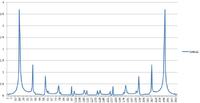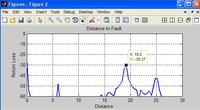cmd
Member level 2

Hi everyone,
I have to make Distance to Fault measurement on cables. I have a source data from VNA return loss versus frequency. I have to transform the data into time domain with iFFT. In my data there are 301 frequency points (0.7GHz-1Ghz in 1Mhz steps) with their return loss values. How should i use iFFT function in MATLAB for this purpose?
Thanks in advance!
I have to make Distance to Fault measurement on cables. I have a source data from VNA return loss versus frequency. I have to transform the data into time domain with iFFT. In my data there are 301 frequency points (0.7GHz-1Ghz in 1Mhz steps) with their return loss values. How should i use iFFT function in MATLAB for this purpose?
Thanks in advance!
Last edited:









